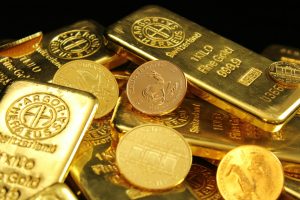Land Rover Defender 130: A Spacious and Powerful Off-Road Giant
4 min read
The Land Rover Defender 130 stands as an extended version of the brand’s iconic off-roader, merging ruggedness with the versatility of an SUV. Decades ago, this would have been the vehicle featured in safari-themed advertisements, with an open roof, adventurers perched in the back, and wildlife roaming in the distance. Today, however, it has evolved into the most spacious option in the Defender range, offering more than just practicality for adventurous outings.
The most notable feature of the Defender 130 is its seating capacity. Unlike its siblings, the 130 offers seating for up to eight adults, with two seats in the front, three in the second row, and another three in the third row. There’s also the option for a five-seat Outbound variant, which prioritizes cargo space with a rear compartment large enough to rival small vans. However, it’s important to note that the Defender 130 doesn’t come with Land Rover’s front-row jump seat. If it did, the vehicle would qualify as a minibus in the UK, which would impact its taxation. Nonetheless, with eight comfortable seats and nearly 400 liters of luggage space even when all seats are occupied, the Defender 130 excels in space and practicality, positioning itself as a top choice among large family SUVs.
At 5358mm in length, the Defender 130 is a behemoth, with the extra length coming entirely from a rear overhang extended by 600mm. To preserve the vehicle’s off-road capabilities, Land Rover has reprofiled the rear to minimize any negative impact on its departure angle. Despite its size, the Defender 130 retains the same wheelbase as the Defender 110 and only a slightly larger turning circle, making it surprisingly maneuverable for its size.
The Defender 130 also benefits from a higher standard equipment level than the 110. One of the standout features is the inclusion of height-adjustable air suspension, which adds to the vehicle’s off-road capabilities and overall comfort. This additional feature, along with other upgrades, contributes to the 130 being around 200kg heavier than the equivalent 110 models.
When the Defender 130 first launched, it came with a range of six-cylinder petrol and diesel engines featuring mild-hybrid technology. However, the plug-in hybrid (PHEV) variant has remained elusive, as the rear-axle packaging makes an eight-seat P400e PHEV a less feasible option.
Yet, in true Land Rover fashion, the brand found another way to push the boundaries by fitting the Defender 130 with a supercharged 5.0-litre V8 engine. Enter the P500, the newest and loudest addition to the Defender 130 lineup. As Land Rover moves towards electrification, the P500 feels like a swan song for the era of massive, fuel-thirsty engines. At 2670kg, powered by a 5000cc V8 engine, and stretching over 5.3 meters, the Defender 130 P500 arrives as a final hurrah for Land Rover’s long tradition of building powerful, go-anywhere off-road vehicles.
In a world increasingly focused on sustainability and environmental responsibility, the existence of such a large and imposing vehicle in 2023 may seem out of place. Yet, Land Rover has carved a niche for itself, offering not just off-road capability but luxury and sheer power. The Defender 130 P500 V8 finds itself competing with other giants of the luxury SUV market, such as the Mercedes-AMG G63, Audi RS Q8, and Porsche Cayenne. With its size, strength, and presence, the 130 V8 makes a bold statement in the luxury SUV segment.
The 130 V8 utilizes Jaguar Land Rover’s renowned ‘AJ’ supercharged V8 engine, an engine that has become something of a legend over the years. However, it’s important to note that this might be one of the last chances to experience this iconic engine. Jaguar Land Rover executives have hinted that production of the AJ engine is winding down, and the units used in the Defender 130 V8 are drawn from a limited stockpile. Some of these engines are also reserved for the final production of the Jaguar F-Type, signaling the end of an era for this much-loved powertrain.
When it comes to driving, the modern Defender is more akin to a large SUV than a utility vehicle, even in its most powerful iterations. The Defender 130 handles well for its size, delivering an intuitive and predictable driving experience. However, its sheer bulk remains a challenge for daily driving, particularly in urban settings. At just under two meters in height, it’s important to be mindful of height restrictions in parking garages and other tight spaces. Additionally, at nearly 5.4 meters in length, the Defender 130 is longer than many double-cab pickup trucks, making it difficult to fit into standard parking spaces.
While the V8 engine provides impressive power, the Defender 130’s chassis, which has its roots in a more agricultural design, lacks some of the sophisticated electronic systems found in other luxury SUVs. As a result, the body can lean significantly during cornering, and drivers may need to exercise caution when taking turns at higher speeds. The steering is well-weighted and predictable, but it is not notably more responsive than the standard Defender models.



